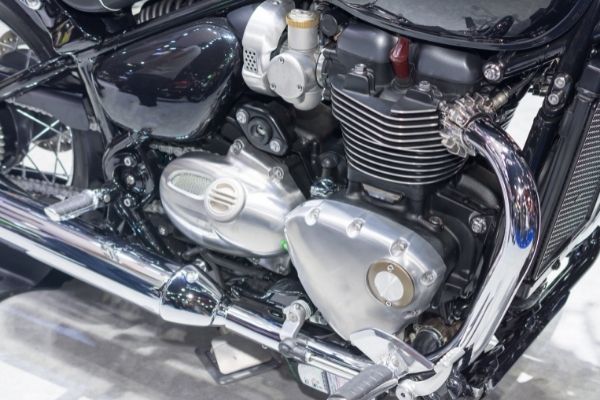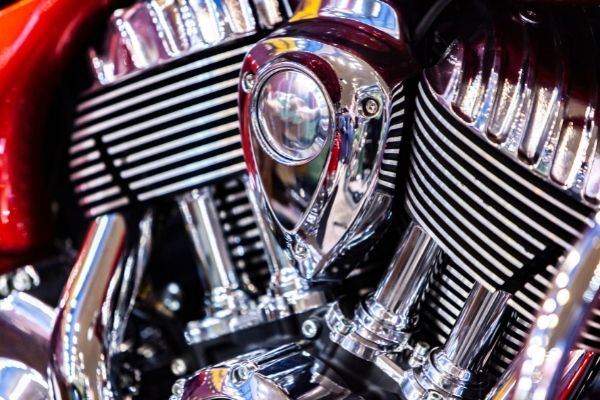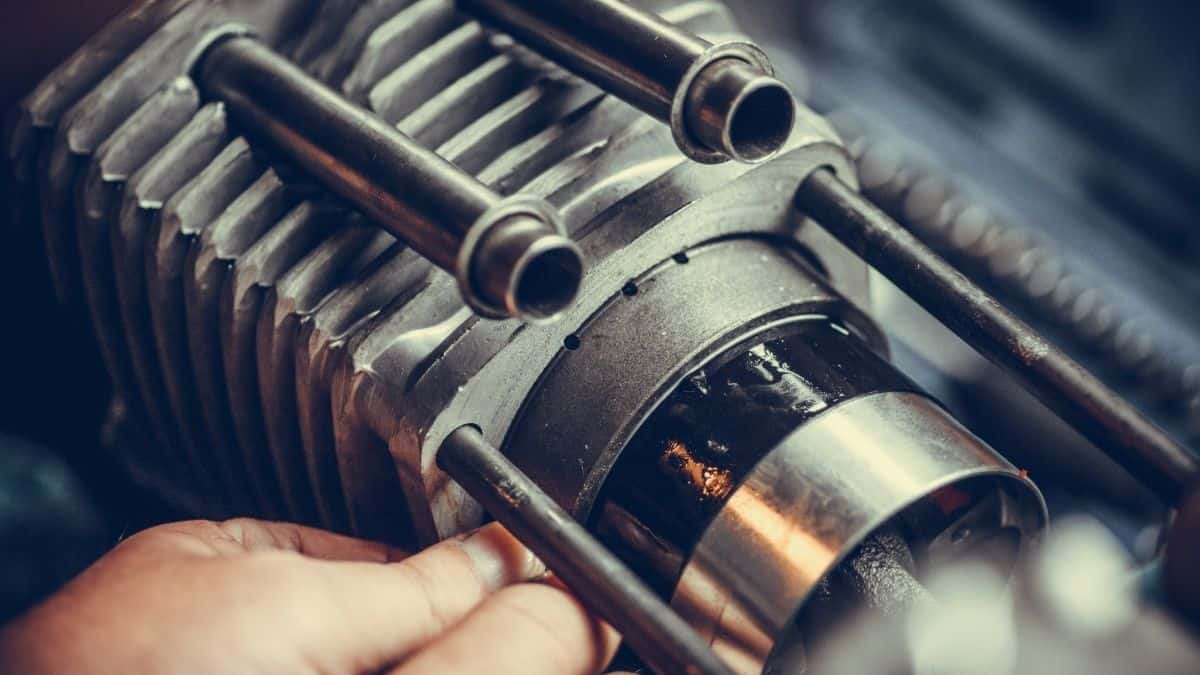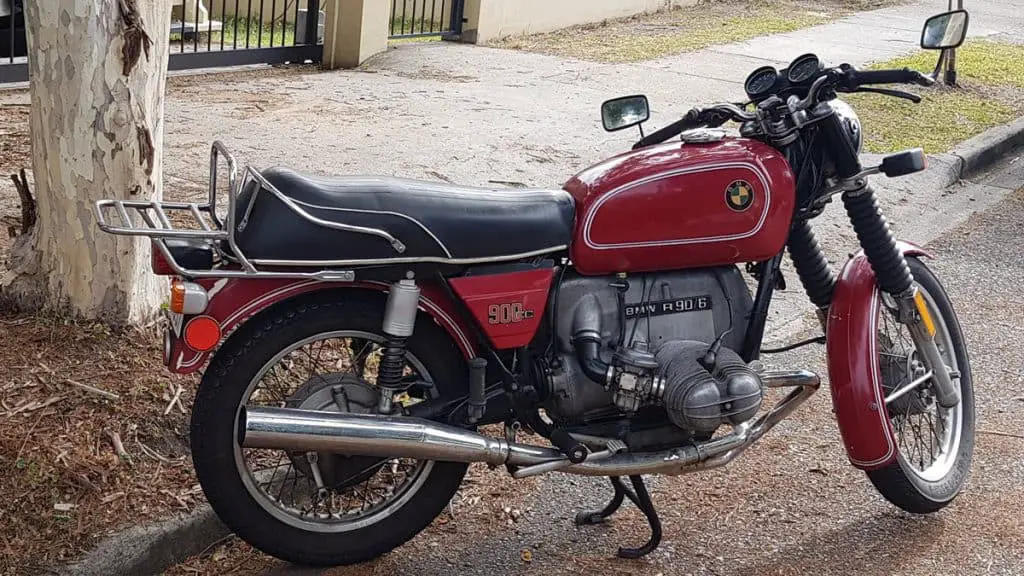Liquid Cooling vs Air Cooling Motorcycle Engine – What’s Better, When & Why
It’s an age-old question bothering even the most experienced riders. What’s better for your motorcycle engine: liquid cooling vs air cooling?
From years of experience, riding both air cooled and liquid cooled, I started to see the best, the worst, and the ugly side of both kinds of motorcycle engine cooling. (Trust me, you do not want to see the ugly side!)
In this article, I’ll go into the depths of the engine cooling rabbit hole, bringing light to this ancient topic so you could become a wiser and better informed rider.
TL;DR: How to Choose
| Heavy traffic | Lightweight | Easy maintenance | Higher power | Better fuel efficiency | Less noise | Sexy looks | |
| Air cooled engines | NO | YES | YES | NO | NO | NO | YES |
| Liquid cooled engines | YES | NO | NO | YES | YES | YES | NO |
Liquid Cooling vs Air Cooling Engines – Which One Is Better?
Or, to put it more aptly, which kind of engine is better for YOU?
You see, too many riders like to generalize the question and think they’ll find the all-knowing-all-showing answer that would put a final nail in this ancient question’s coffin. But they end up overlooking their own needs and riding environment.
Newbies
If you’re an absolute beginner and just dipping your toes in the motorcycle world, air cooled motorcycle engines are your choice!
Why?
Because they are just simpler, easier to understand, and work with! There are fewer parts to break and they just WORK.
Dirt Bike Riders
If you are into dirt bikes and like to get muddy as hell, air cooled bikes are your best friend!
Somebody: “But, you know, mud, off-road gunk, and water will eventually end your bike.”
Me: “Yeah, you wish!” (Pointing at the indestructible Honda XR650L.)
Of course, there are some liquid cooled dual-sport motorcycles that will even outlast the owner, but more about that later on.
Bumpy Road Riders
If your riding conditions aren’t perfect and you mostly ride on dirty, unpaved roads, air cooled engines are your best vehicle.
The thing is, dusty roads and radiator fins on a liquid-cooled engine don’t quite go hand in hand. And riding a liquid-cooled motorcycle on a dusty, poor road is like riding a cruiser through muddy woods. It’s insanity!
Winter Riders

What to do if you don’t want to bother with winter prepping your bike? An air cooled engine is a living dream for any lazy motorcyclist. (Myself included!)
There’s NO liquid in the engine that could freeze when left unintended and destroy your engine’s block. Trust me, I almost had to sell one of my kidneys to fix that disaster!
Retro Bike(r)s
If you’re into retro motorcycles and simply love the look of those sexy polished fins and chrome pieces, an air cooled engine is your go-to option.
(I have a poster of a polished, retro, air cooled BMW R18 with all those sexy chrome pieces, but don’t tell my girlfriend! She’s already jealous of my retro bikes fascination.)
City Riders
If you have a commute that’s going through heavy start-and-stop traffic, a liquid-cooled engine will save your bike from a complete meltdown.
Air cooled engines have one big nemesis and that’s heavy, long traffic! When there isn’t any airflow, air cooled engines start to suffocate due to the heat zone they create when staying still.
Ever experienced the “die inside” feeling?
Well, that’s what I felt when that green light turned ON, and my bike turned OFF due to overheating.
Touring Bikers
If your daily drive is through mountain passes and different altitudes – liquid cooled engines are your best shot.
The thing is, air-cooled engines don’t take the rapid changes of altitudes pretty well. It has to do with an advanced fuel mixture that air-cooled engines have to have.
That’s why Suzuki SV650 is giving me a hard time going through those narrow mountain ways.
Here’s Why It Ultimately Depends on You
Do you want to ride a motorcycle, or do you want to know the motorcycle?
A life lesson right here! If you want to hop on a bike without worrying about the oil leakage, high engine temperatures, fuel efficiency, and keeping everything cool (pun intended), liquid-cooled motorcycle engines are your thing.
If you want to really get to know your bike through “easily” fixing the engine, valve calibration, modifying fuel intake, and all geeky stuff – air cooled motorcycle engines are your playground.
Air-Cooled vs Liquid-Cooled Engines: Let’s Look Into Mechanics

If you’re not a mechanical engineering student or a geeky motorcycle mechanic, please skip this section.
Just kidding!
Let’s talk mechanics and see why liquid-cooled bikes are better.
The thing is, liquid cooled engines are revving faster and higher, while at the same time outputting higher engine performance at its peak.
It’s like running a marathon with and without a bottle of water. If you run without water, there won’t be anything to keep you cool and hydrated. So, eventually, you’ll drop after a mile, overheated and tired as a dog.
But why does liquid cooling have such an enormous effect on an engine?
Everything’s about the temperature!
When an engine has liquid cooling, it can run at more stable temperatures. More stable temperatures lead to higher compressions. Higher compressions mean better engine tolerances. Better engine tolerances mean better efficiency. Better efficiency means more gas money in your pocket.
Plus, water can absorb a lot more energy than metal, so those rapid changes in the temperature take longer. Taking advanced physics aside, it means a sudden heavy load will have a less punishing effect on your engine.
But what if I tell you that liquid-cooled engines are not peaches and cream?
Here’s the catch. Liquid-cooled engines are more complex than air-cooled ones. They require 10 times more pieces to function. You can’t just put a radiator, a bunch of hoses, and a thermostat on your engine and call it liquid-cooled. Trust me, I’ve tried it, and it doesn’t work. You have to have inner-engine coolant galleys, gaskets, and extra gears.
More components means more stuff that can go wrong. And when they go wrong, liquid-cooled engines start to produce that notorious white smoke.
Those extra components mean the bike is a lot heavier than an air-cooled one. And extra weight for an inexperienced rider means it’s more challenging to control the bike.
Put that into a big dual-sport motorcycle, and you have yourself a drop and a coolant leak in the middle of the woods. In other terms, time to say farewell to your bike.
Still, some liquid-cooled dual-sport bikes are literally indestructible!
So, are liquid-cooled engines bad?
Yes AND no.
Yes because you can say goodbye to overheating your engine in long, heavy traffic, on a hot summer’s day. (The only thing that will overheat is you under that motorcycle gear.)
Liquid-Cooled vs Air-Cooled Engines: Maintenance
… And no because liquid-cooled engines are a big pain in the where-sun-doesn’t-shine when it comes to maintenance and cleaning.
Cleaning those small radiator fins on a liquid-cooled motorcycle is a round of hell of its own. When all that dirt and road gunk gets stuck inside those fine fins, cooling starts to weaken. In the end, your engine suffers and starts to overheat. Of course, there are less time-consuming ways to properly inspect and clean radiator fins.
Plus, if any of those radiator pipes get broken, letting a couple of drops of coolant onto your tire, you’ll be sliding like Rosi on his Ducati on a motor track.
Cleaning air-cooled engines is like having a stroll in paradise. There are no fragile parts that you need to watch out for or give special treatment.
But don’t think that you could blast your air-cooled engine with a pressure washer and get those engine fins sparkling clean.
(Did that once. Afterward, the engine was “burning” tap water inside its chamber.)
The best way to clean the engine fins of an air-cooled motorcycle is with a steam cleaner.
Which One Is Better for the Environment?
“Who cares about the environment? I want my engine to roar like a lion when I go down the street!”
This is what the egotistical biker hiding in every one of us would say. But let’s shush him right there.
Liquid-cooled motorcycle engines run a leaner fuel mixture. A leaner mixture produces higher temperatures which the coolant compensates and it’s perfectly fine for the engine. A leaner mixture uses less fuel and pollutes the environment less.
Using a leaner mixture, manufacturers can pass strict environmental regulations and make the engine more “friendly” to the environment.
(Smart, tricky fellas, aren’t they?)
But what about air-cooled engines?
Oh, you mean those fuel eating, NO2 furnaces on two wheels?
Air-cooled engines need a richer fuel mixture to balance a low temperature inside the combustion chamber. Lower combustion temperature means longer life for the piston tops, but not for the environment. All that unburned fuel is poured right out of the exhaust into the atmosphere.
It’s not only about the environment that the regulators are cracking a whip on manufacturers’ backs. It’s also about the noise!
Liquid-cooled engines are quieter than air-cooled ones. Coolant surrounding all those tiny, buzzing gears absorbs a significant amount of noise.
Less noise means happier legislators.
If engines are quieter, manufacturers can put different parts that would add more power – like a free-flowing motorcycle exhaust.
But does that mean air-cooled motorcycle engines will struggle to meet future noise regulations?
I’d hope the answer is NO, but… ***Cries chrome tears.***
That’s why manufacturers are ditching the sinking boat called the SS “Air-Cooled Engines”.
Except for a few. Ducati, Honda, and Harley are some of the few exceptions that produce air-cooled engines as a reminder of better days. A marketing trick that reminds us what a motorcycle truly looked (looks) like. It’s part of the “frozen-in-time” design trend that will still make your mouth drop.
Which Is Better for a Two-Stroke (+ Is It Possible at All?)
Have you ever seen a scooter that has a liquid-cooled engine?
It’s like seeing a chicken with small T-rex arms. Ridiculous!
Still, it is possible.
Most touring (maxi) scooters and three-wheeled scooters have liquid-cooled engines. Take a look at the legendary Suzuki Burgman 650!
It’s very unheard of to find a two-stroke scooter engine that would have liquid-cooling and small displacement. Two-stroke engines tend to produce a lot more heat than four-strokes. Since they are cheap as hell, it’s not profitable putting liquid-cooling into those engines.
Encapsulated by the plastic body of a scooter, those small engines have a completely different kind of cooling – fan cooling!
Those small engines have a big fan turbine that pumps air straight into the engine, allowing it to cool down, even while standing still.
Bottom Line
Which kind of engine cooling is the best? Which one would last longer?
**Drum roll**
The answer is… Both!
With both engine-cooling methods, your bike can outlast you. If properly kept, of course.






